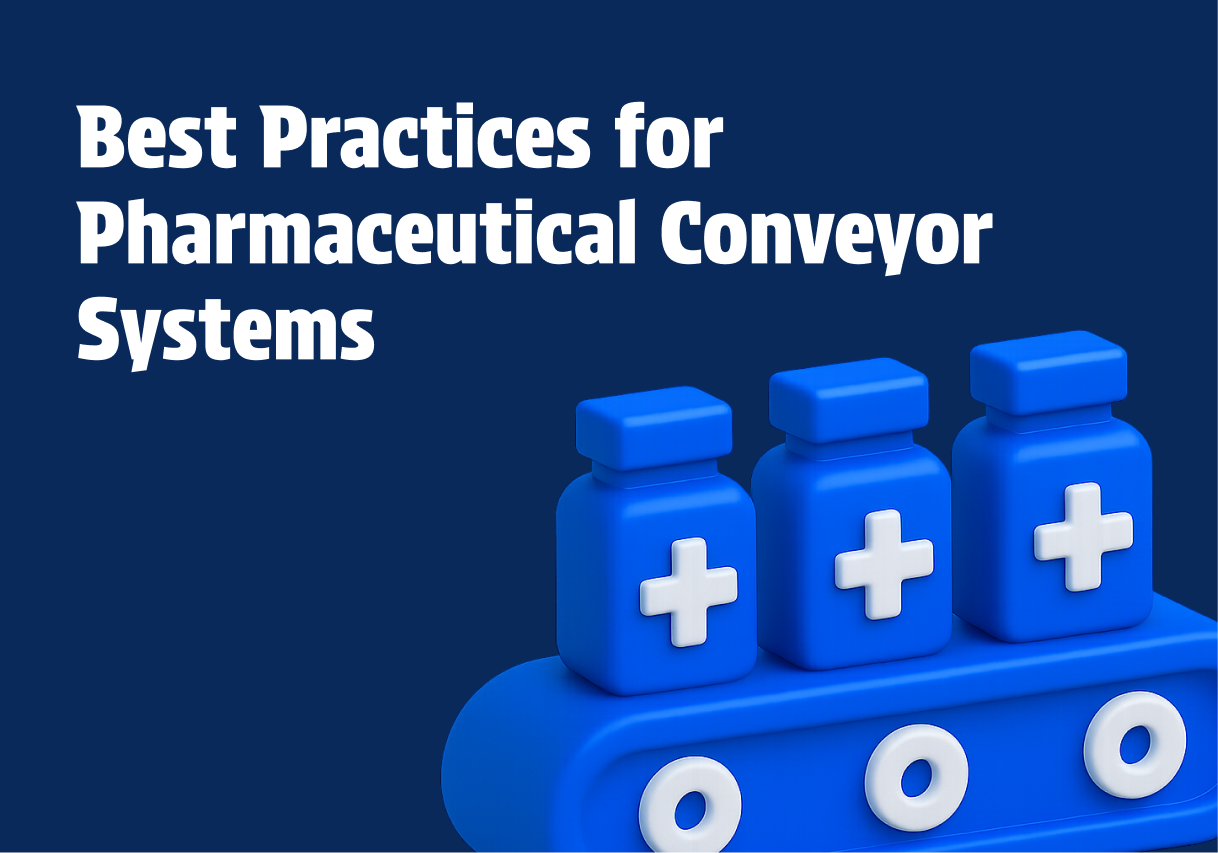In the fast-paced world of pharmaceutical manufacturing, conveyor systems play a pivotal role in maintaining smooth production workflows while ensuring the safety and integrity of sensitive products. Efficient material handling is not just a matter of operational convenience; it directly impacts product quality, compliance, and overall manufacturing speed.
However, conveying sensitive products often requires controlled environments and careful handling to prevent contamination, degradation, or damage. A mismanaged conveyor system can lead to costly downtime, regulatory issues, and compromised product safety.
Adopting best practices in conveyor system design, operation, and maintenance is key to addressing these challenges effectively. This blog explores the best practices for pharmaceutical conveyor systems, offering practical guidance to optimise your production lines.
Key Takeaways:
- Choose conveyors made with hygienic, compliant materials and designs to prevent contamination and meet regulatory standards.
- Incorporate smart automation, modular layouts, and energy-efficient components to make your operations more efficient and sustainable.
- Prioritise safety by installing guards, emergency stops, and ergonomic designs, and ensure your team receives proper training.
- Maintain your conveyors regularly and select scalable systems so you can rely on them as your production needs evolve.
What are Conveyor Systems?
Conveyor systems are mechanized solutions designed to transport materials from one point to another in a controlled and efficient manner. In pharmaceutical manufacturing, these systems are often custom-engineered to handle delicate products, maintain hygiene, and integrate seamlessly with other production equipment.
Conveyors can range from simple belt systems to complex automated networks that move packaging, raw materials, and finished products. Choosing the right system is crucial for you to maintain throughput, reduce human error, and ensure compliance with industry standards.
Key Components:
- Belts and Rollers: Serve as the primary medium for moving products. Pharmaceutical conveyors often use stainless steel or FDA-approved materials to maintain hygiene and durability.
- Motors and Drives: Power your conveyors with consistent motion and control. High-quality motors help you reduce downtime and adjust speeds precisely for sensitive products.
- Frames and Supports: Built from corrosion-resistant materials, these provide your system stability, especially in cleanroom or high-moisture environments.
- Sensors and Automation Controls: Enable real-time monitoring, product tracking, and integration with packaging or inspection systems for precise, automated workflows.
- Safety Guards and Enclosures: Protect your team and products from accidents, particularly in high-speed or automated areas.
By integrating conveyors with packaging and quality control systems, you can maintain a smooth, reliable production process that meets regulatory standards.
Also Read: Comprehensive Guide to Types of Conveyors and Their Uses
What is the Role of Conveyor Systems in Pharmaceutical Manufacturing?
Conveyor systems are more than just mechanical transport mechanisms; they help you boost efficiency and maintain compliance across your production lines. Key functions include:
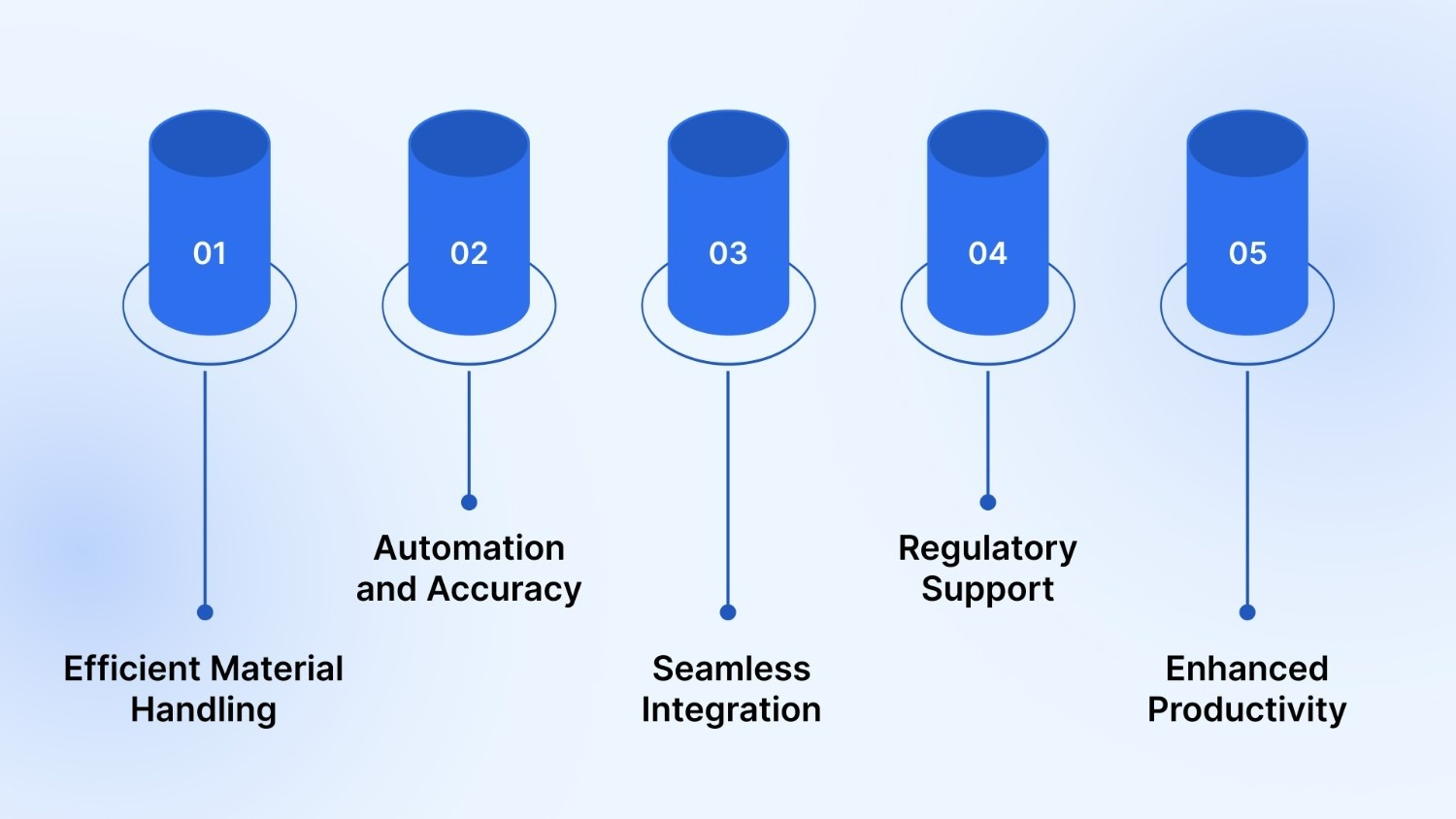
- Efficient Material Handling: Conveyors transport your raw materials, intermediates, and finished products across different stages of production, reducing manual effort and speeding up workflows.
- Automation and Accuracy: Automated conveyor systems minimize human contact, lowering contamination risks and errors while keeping product handling consistent.
- Seamless Integration: Conveyors link multiple production stages, from formulation to packaging, creating a continuous, streamlined manufacturing process.
- Regulatory Support: Well-designed conveyors help you stay GMP-compliant by ensuring controlled, traceable, and hygienic material movement throughout your facility.
- Enhanced Productivity: By reducing bottlenecks and improving workflow, conveyors enable higher throughput and optimized performance for your operations.
Also Read: How to Fix Conveyor Belt Tracking in Easy Steps
Best Practices for Pharmaceutical Conveyor Systems
Pharmaceutical conveyor systems must balance efficiency, safety, hygiene, and adaptability. Implementing the right practices ensures your conveyors perform at their best while meeting compliance goals.

1. Regulatory Compliance and Hygiene
Maintaining cleanliness and meeting regulatory standards is the foundation of your pharmaceutical conveyor setup. These systems must comply with FDA, GMP, and ISO standards to keep every batch safe, contaminant-free, and traceable.
- Use FDA-Approved and Non-Corrosive Materials: Opt for stainless steel frames and FDA-compliant plastic belts that resist rust and chemical corrosion. These materials are ideal for your cleanroom environments and prevent bacterial growth.
- Design for Easy Cleaning and Inspection: Choose conveyors with open-frame designs and quick-release belt mechanisms. This allows your maintenance team to perform routine cleaning or sanitation without dismantling the system completely.
- Follow GMP and ISO 14644 Standards: Ensure all conveyor components align with Good Manufacturing Practices (GMP) and ISO 14644 cleanroom standards. Smooth surfaces, sealed bearings, and minimal crevices help you prevent contamination.
- Maintain Detailed Sanitation Logs: Document every cleaning cycle and inspection to meet FDA audit requirements. A well-kept sanitation record demonstrates your accountability and reinforces quality control.
Prioritizing hygiene and documentation ensures that your conveyor system stays compliant and protects product quality.
2. Innovations and Sustainability
Modern pharmaceutical facilities are embracing innovation to help you enhance efficiency while meeting sustainability goals. Incorporating smart technology and energy-efficient designs ensures that your conveyors not only perform well but also align with environmental and operational objectives.
- Adopt Smart Automation and IoT Integration: Use connected sensors, PLC controls, and data-tracking tools to monitor your product movement, detect faults, and schedule predictive maintenance automatically.
- Opt for Energy-Efficient Components: Implement variable-speed drives and low-energy motors so that you can optimize power usage without compromising throughput.
- Use Eco-Friendly and Recyclable Materials: Recyclable conveyor belts and lightweight aluminum or stainless-steel frames help you reduce waste and simplify future disposal. These choices also lower the facility’s carbon footprint.
- Implement Modular and Reconfigurable Designs: Modular conveyors allow you to expand or modify layouts easily as your production demands change, reducing equipment waste and downtime.
By blending innovation with sustainability, you can build systems that are efficient and environmentally responsible.
3. Safety Considerations
Safety in pharmaceutical environments protects both your team and your products. A strong safety strategy builds trust, improves efficiency, and keeps your operations compliant with OSHA and FDA safety guidelines.
- Install Guards and Barriers Around Moving Parts: Safety shields prevent your team from coming into direct contact with belts and rollers, reducing workplace injuries and contamination incidents.
- Integrate Accessible Emergency Stop Systems: Place emergency stop buttons along all key sections of the conveyor line. This allows you to halt operations instantly if a malfunction or safety concern occurs.
- Design for Ergonomic Operation: Adjustable-height conveyors and ergonomic workstations help reduce your operator fatigue and repetitive strain during long production cycles.
- Implement Comprehensive Operator Training: Regular safety workshops and equipment handling training ensure your team understands potential risks and responds correctly in emergency situations.
Embedding safety into every level of conveyor design and operation promotes a secure work environment and uninterrupted production efficiency.
4. Maintenance and Longevity
A well-maintained conveyor system keeps your operations running efficiently while minimizing downtime. Proactive maintenance prevents unexpected breakdowns and ensures the consistent performance expected from the best conveyors for pharma.
- Schedule Routine Inspections and Audits: Inspect belts, rollers, and drives regularly for signs of wear, misalignment, or contamination. Early detection allows you to address issues before they become major repairs.
- Follow a Preventive Maintenance Program: Replace worn-out parts and lubricate mechanical components at regular intervals. This proactive approach is far more cost-effective than reactive repairs.
- Maintain a Ready Stock of Spare Parts: Keep critical spares such as belts, rollers, and bearings on-site. This ensures you can replace them immediately during emergencies, reducing downtime.
- Engage Manufacturer-Trained Technicians: Partner with experts like John Maye’s certified service team for installation, calibration, and emergency maintenance. Professional service ensures compliance and reliable performance for your operations.
A structured maintenance plan keeps your conveyor system operating efficiently and hygienically over time.
5. Scalability and Flexibility
Pharmaceutical production lines are dynamic; product types, packaging sizes, and regulatory standards evolve frequently. A scalable and flexible conveyor system can grow and adapt with your business needs without major overhauls or downtime.
- Choose Modular Conveyor Structures: Modular conveyors allow you to extend, shorten, or rearrange them as production lines change, enabling fast reconfiguration without replacement.
- Ensure Seamless Equipment Integration: Select conveyors compatible with weighing machines, vision inspection systems, or robotic arms. This helps you streamline packaging and quality control.
- Design for Future Expansion: Layouts should leave space for new equipment or conveyors to be added. This allows you to scale your facility without disruption.
- Enable Smart Automation Upgrades: Integrate conveyors with software systems that can scale over time. This ensures your system supports new tracking technologies or IoT-enabled data analytics.
Flexible and scalable conveyors help your facility maintain long-term value and stay competitive as production demands grow.
Also Read: Conveyor Belt Maintenance Guide for Improved Efficiency
How John Maye Can Support Your Pharmaceutical Conveyor Needs?
John Maye Company, established in 1983, offers comprehensive solutions to meet the unique demands of pharmaceutical conveyor systems. With over 40 years of experience, our approach ensures that your production lines remain efficient, safe, and compliant.
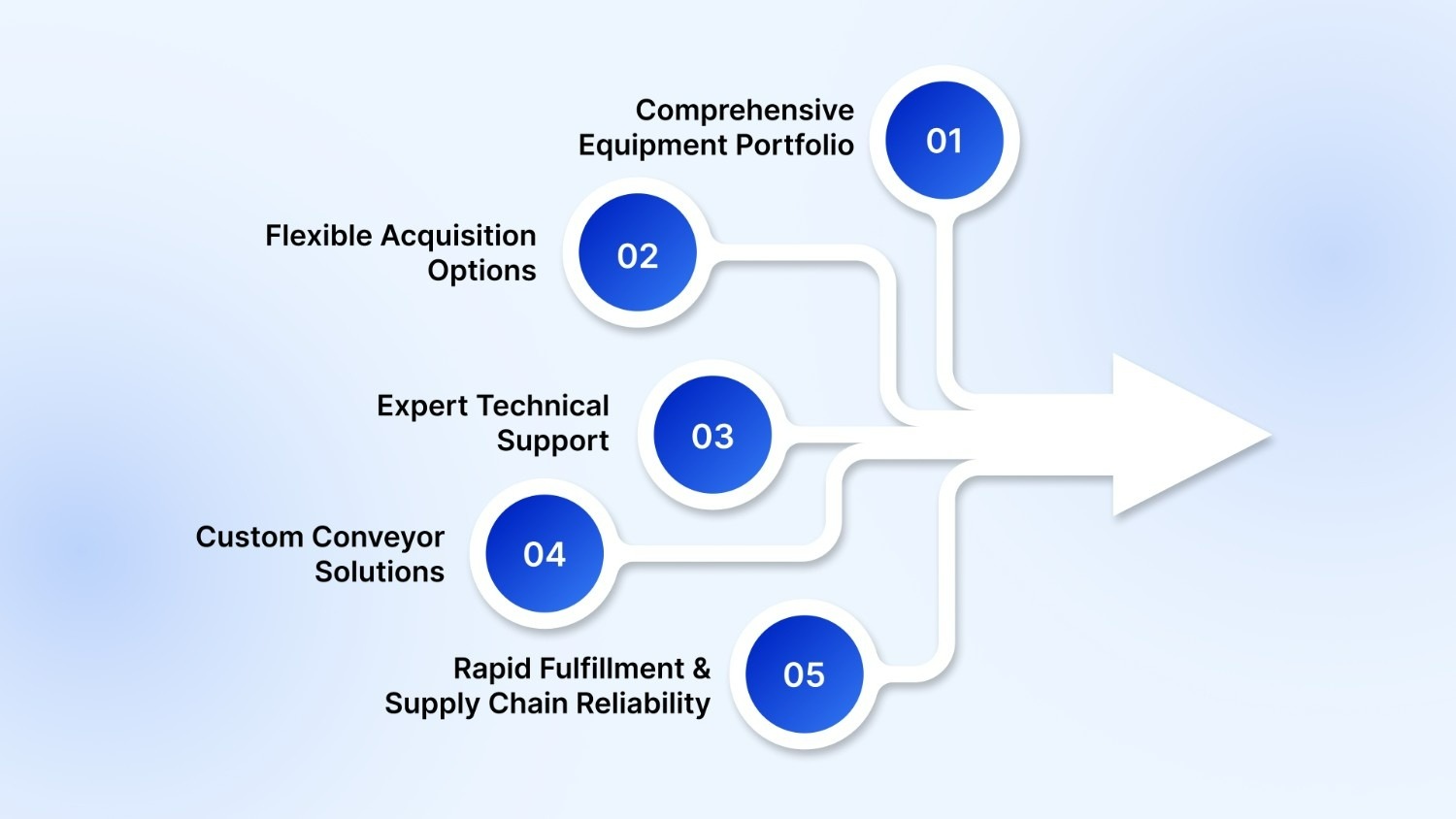
- Comprehensive Equipment Portfolio: John Maye provides a full range of conveyor systems, including case erectors, case sealers, lift tables, and palletizing solutions, all designed to meet strict hygiene and regulatory standards. Their equipment selection ensures you get the best conveyors for pharma tailored to your production needs.
- Flexible Acquisition Options: Whether you prefer purchasing, leasing, or renting, John Maye offers models that reduce capital expense while enabling rapid deployment. This flexibility allows manufacturers to scale operations without major upfront investment.
- Expert Technical Support: Manufacturer-trained technicians provide installation, preventive maintenance, and 24-hour emergency repairs. Their expertise ensures minimal downtime, optimal performance, and compliance with industry standards.
- Custom Conveyor Solutions: John Maye can design conveyors that integrate seamlessly with your existing packaging lines. Ergonomic layouts, modular designs, and automation options help maximize throughput and adapt to evolving production demands.
- Rapid Fulfillment & Supply Chain Reliability: With over 2,500 SKUs in stock, John Maye ensures fast, 24-hour shipping. This reduces production bottlenecks and provides quick access to essential parts and supplies, keeping your operations running smoothly.
By partnering with John Maye, pharmaceutical manufacturers can ensure their conveyor systems meet industry standards and support their operational goals.
Conclusion
Implementing best practices in pharmaceutical conveyor systems is crucial for ensuring efficiency, safety, and regulatory compliance. From selecting the right materials and designs to maintaining and upgrading systems, every aspect contributes to the overall performance and reliability of the production process.
Collaborating with experienced partners like John Maye Company can provide the expertise and support needed to optimize conveyor systems for pharmaceutical applications.
Request a custom consultation today to explore how John Maye can enhance your pharmaceutical conveyor systems.
FAQs
1,. What cleaning and sanitation practices are recommended for pharmaceutical conveyor systems?
Pharmaceutical conveyors should be cleaned regularly using validated cleaning protocols, non-toxic detergents, and disinfectants. Surfaces must be easy to access and resistant to chemicals. Routine inspections, documented cleaning logs, and adherence to GMP standards ensure contamination prevention and maintain product integrity.
2. How do you ensure proper product tracking and traceability on conveyor lines?
Proper tracking involves integrating barcode scanners, RFID tags, or vision systems to monitor each product’s movement. Data is captured in real time, logged in a central system, and linked to batch or lot numbers, ensuring complete traceability, compliance with regulations, and rapid response to recalls or quality issues.
3. What safety measures should be implemented for operators working with pharmaceutical conveyors?
Operators should follow strict safety protocols, including machine guarding, emergency stop buttons, PPE usage, and regular safety training. Risk assessments, clear signage, and standard operating procedures reduce accidents, while routine maintenance ensures conveyors operate safely without hazards like pinch points or mechanical failures.
4. How do modular conveyor designs benefit pharmaceutical manufacturing processes?
Modular conveyors offer flexibility, easy reconfiguration, and scalability to meet changing production needs. They simplify maintenance, reduce downtime, and accommodate different product sizes and workflows. This adaptability ensures efficient operations, supports compliance, and allows seamless integration with automation and other equipment.
5. How can conveyors be integrated with other pharmaceutical packaging and labeling equipment?
Conveyors can be linked with filling, capping, labeling, and inspection machines through synchronized controls or software. Integration ensures smooth product flow, reduces manual handling, improves accuracy, and supports automated packaging lines, enhancing productivity, traceability, and overall operational efficiency.
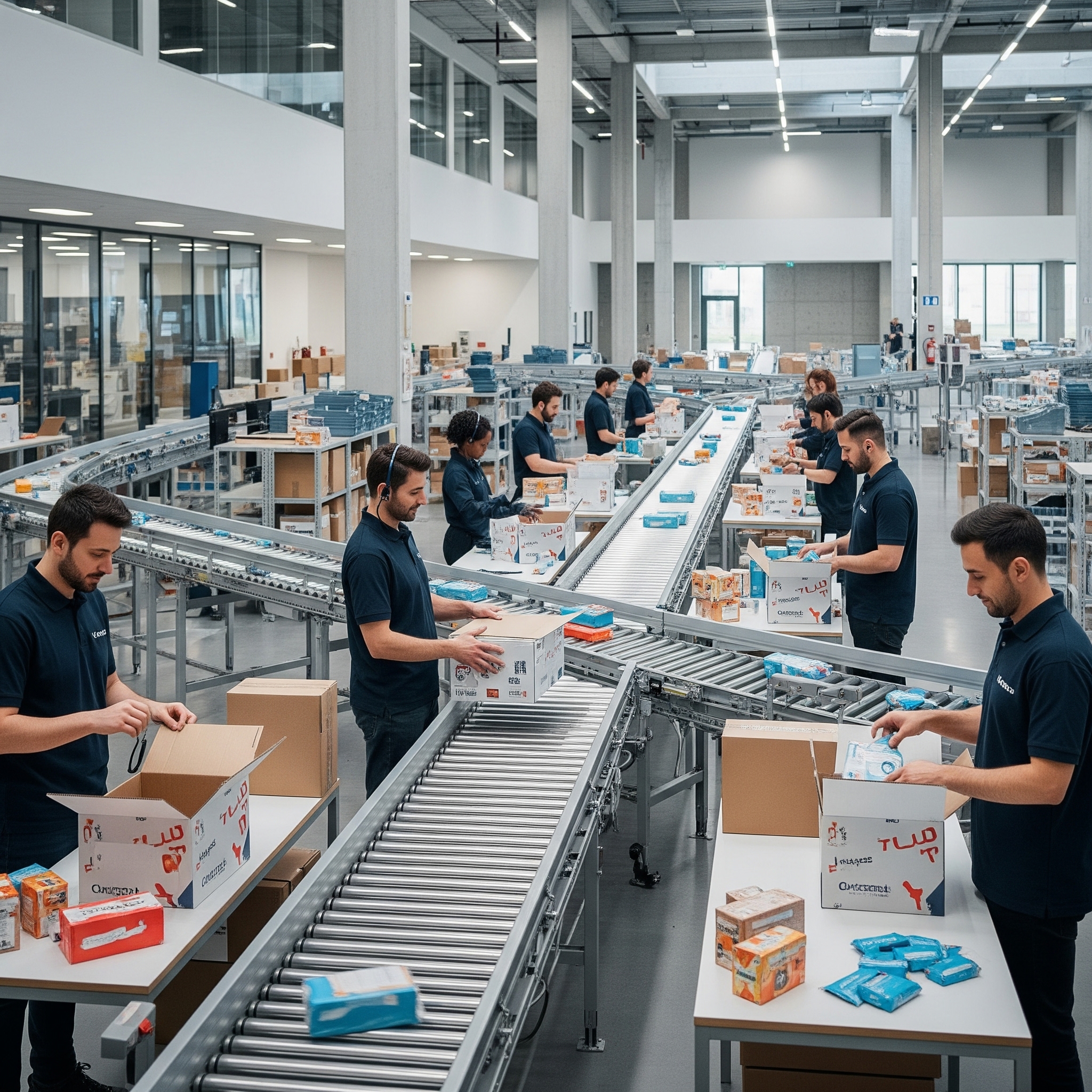
Blogs
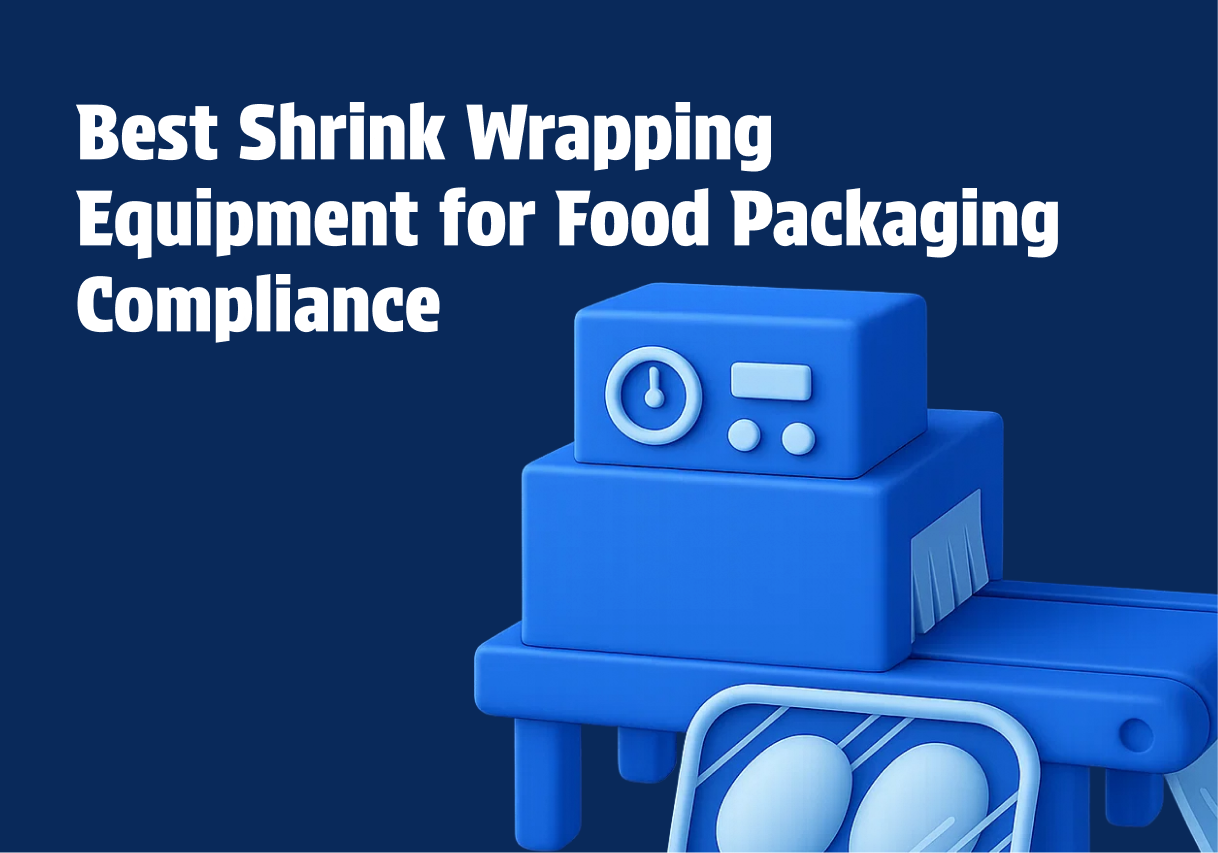
Best Shrink Wrap Machines for Your Business
Discover the best shrink wrapping equipment for food packaging compliance. Conflex offers high automation. Increase efficiency now!
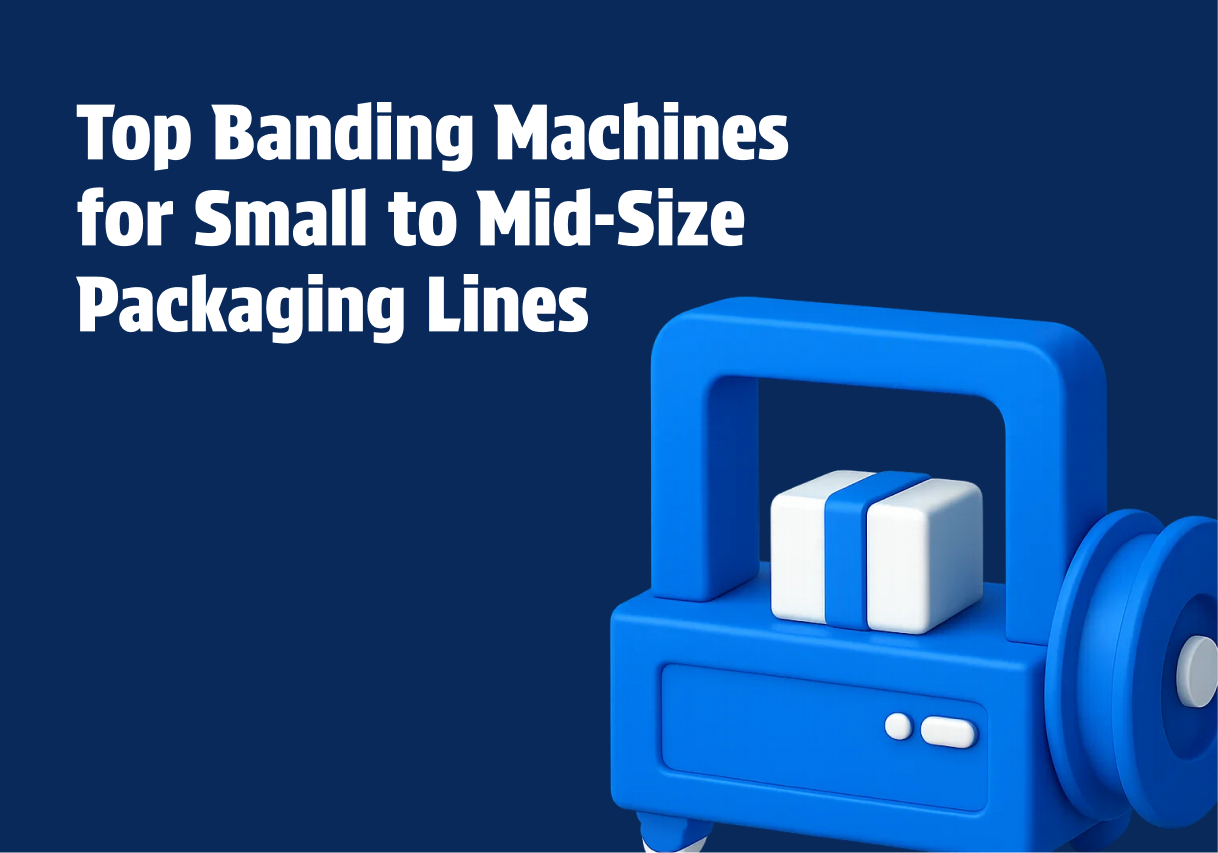
Top Banding Machines for Packaging Solutions
Find top banding machines for small to mid-size packaging lines! Discover flexible automation options and sustainability features. Optimize efficiency today!
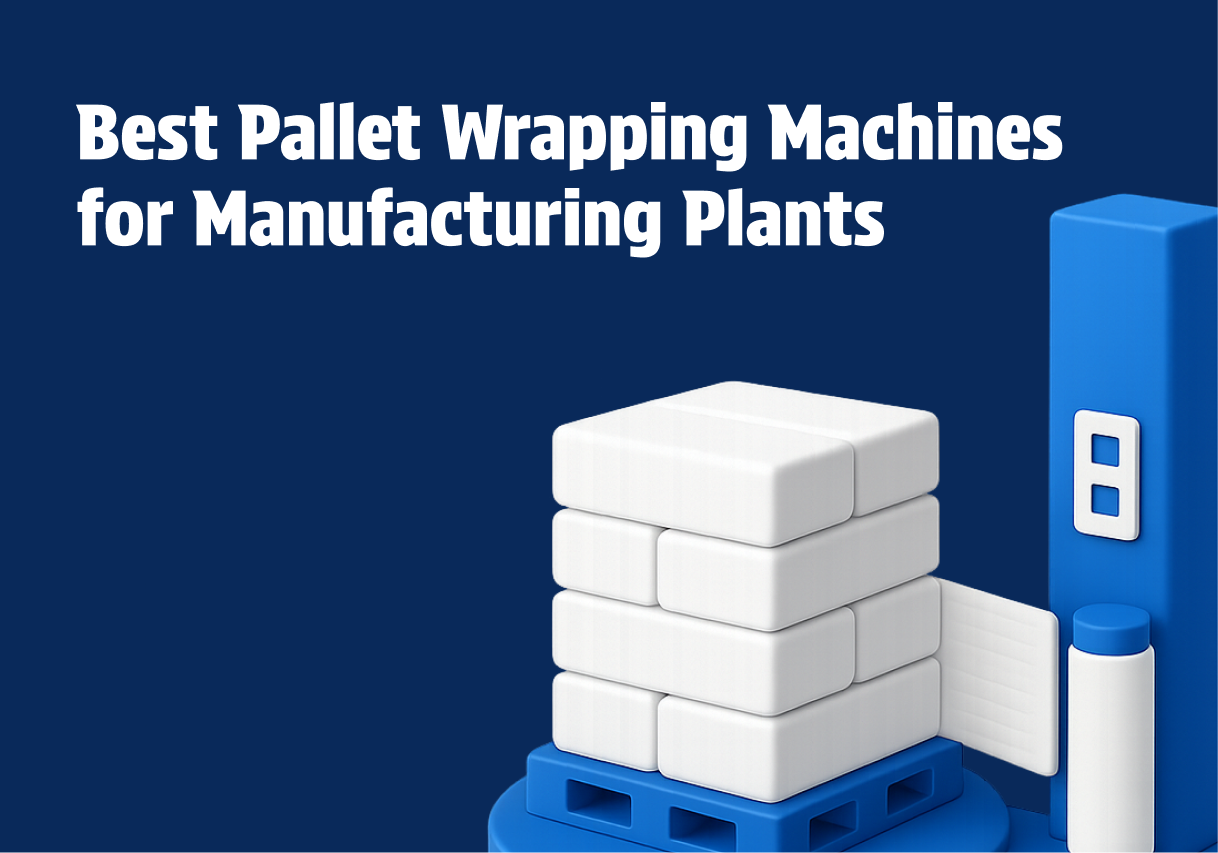
Best Pallet Wrapping Machines for Manufacturing Plants 2025
Explore the best pallet wrapping machines for manufacturing plants in 2025. Learn how to choose, compare key models, and reduce wrapping costs.
